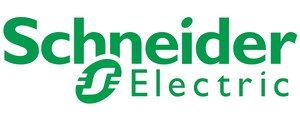Schneider Electric TradeOff Tool Delivers Detailed Cost and Energy Advantages of Lithium-ion Cells Versus VRLA Batteries
- New web-based software tool allows decision makers to model the long-term cost implications of deploying Li-ion cells over traditional Valve Regulated Lead-Acid (VRLA) batteries for UPS energy storage
- Due to longer life and greater energy density, UPSs utilising Li-ion have a lower TCO and have become a popular choice for distributed IT and edge environments in the Retail, Healthcare, and Finance sectors
- Key benefits including smaller footprint and increased energy efficiency also offer significant cost benefits to Hyperscale, Colocation and Cloud Service Providers
LONDON, Sept. 12, 2019 /PRNewswire/ -- Schneider Electric, the leader in digital transformation of energy management and automation, has introduced a new Data Centre TradeOff Tool, designed to enable customers and Channel Partners to model the long-term cost implications of utilising new edge computing and critical infrastructure technologies.
The 'Lithium Ion vs VRLA TradeOff Tool', created by Schneider Electric's Data Centre Science Centre, details the costs incurred when deploying Lithium-ion (Li-ion) batteries over VRLA in UPS applications, taking into account several factors including the source location, the associated energy costs, the UPS capacity, service life, backup time, replacement period and cost of real-estate to house the cells.
Using data driven algorithms, the tool analyses the cumulative cost of selecting Li-ion vs. VRLA energy storage approaches and calculates long-term figures, detailing the total cost of ownership (TCO) benefits of Li-ion.
Significant benefits via lower TCO
Lithium-ion (Li-ion) offers many advantages over lead-acid batteries, providing resilient backup power to data centres, should mains supply become disrupted. However, they previously carried a premium in terms of initial capital expenditure and although this cost is diminishing with time through technology improvements and volume production, a careful analysis of the TCO is required to determine the optimal product choice.
Owing to their design and cell chemistry, Li-ion batteries are smaller, lighter and have a longer lifecycle than lead-acid alternatives. They can also withstand a greater number of charge/discharge cycles and recharge more quickly. As a result, they require less service maintenance and less frequent replacement, resulting in lower operating costs.
Studies conducted by Schneider Electric's Data Centre Science Centre and detailed in White Paper #229: 'Battery Technology for Data Centers', found that over a 10-year period, Li-ion delivered a TCO that is between 10% and 40% lower than equivalent UPS systems based on VRLA batteries.
Li-ion is the optimal choice for customers
Due to thier lower TCO and greater reliability, single phase UPS with Li-ion have become an optimal and popular choice within distributed IT environments for the Retail, Healthcare, and Finance sectors. For these smaller, localised edge computing solutions, where application availability is critical and management becomes a key challenge, Lithium-ion delivers greater levels of resiliency and uptime.
"In late 2018, a Bloomberg New Energy Finance report forecasted that 40% of data centre battery backup would incorporate lithium-ion by the year 2025," said Wendy Torell, Senior Research Analyst, Schneider Electric Data Centre Science Centre. "Among hyperscale data centres, this forecast is predicted to be even greater at 55%. Li-ion cells also present many benefits for critical power solutions used by Internet Giants, colocation and cloud service providers. Here space is often at a premium and the smaller footprint offers significant revenue advantages as more white space becomes available to accomodate customers."
The Lithium Ion vs VRLA TradeOff Tool is one of a number of digital software tools from Schneider Electric that allow data centre operators to model the cost implications of deploying different power, cooling, and infrastructure management solutions.
For more information on Schneider Electric's TradeOff Tools and to find out how they benefit both customers and partners, please register for our webinar, taking place at 2pm UK time on Thursday, October 17th, 2019.
About Schneider Electric
At Schneider, we believe access to energy and digital is a basic human right. We empower all to do more with less, ensuring Life Is On everywhere, for everyone, at every moment.
We provide energy and automation digital solutions for efficiency and sustainability. We combine world-leading energy technologies, real-time automation, software and services into integrated solutions for Homes, Buildings, Data Centers, Infrastructure and Industries.
We are committed to unleash the infinite possibilities of an open, global, innovative community that is passionate with our Meaningful Purpose, Inclusive and Empowered values.
Related resources:
- White Paper No 231, "FAQs for Using Lithium-ion Batteries with a UPS"
- White Paper No 229: "Battery Technology for Data Centers: VRLA vs. Li-ion."White Paper No 225, "The Drivers and Benefits of Edge Computing"
- APC by Schneider Electric UK Blog
Follow us on: Twitter, Facebook, LinkedIn, Google Plus, YouTube, Instagram, Blog
Hashtags: #EcoStruxure #LithiumIon #EdgeComputing #UPS






Share this article